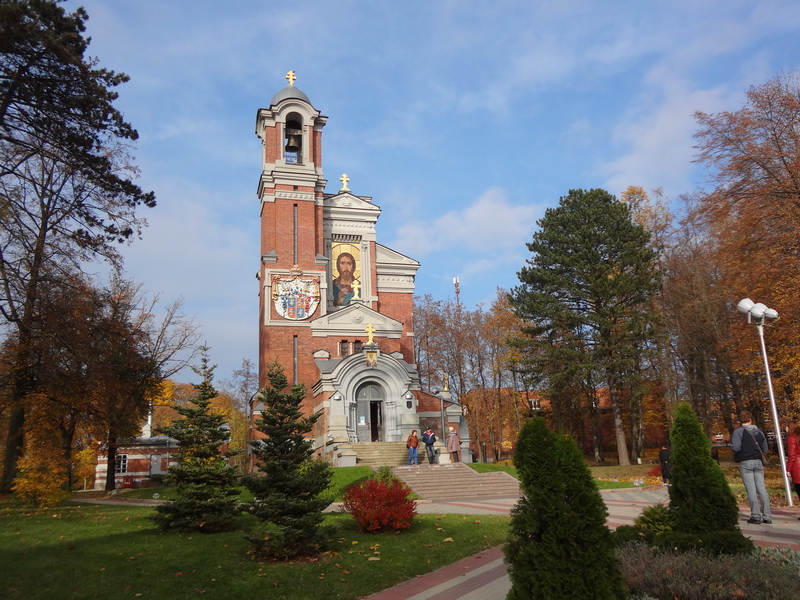History
In 1891, Russian Imperial Army General Prince Nikolai Sviatopolk-Mirsky acquired the ruined Mir estate, formerly owned by the Radziwills, and began its restoration. After his death in 1898, his wife Cleopatra decided to honor the memory of her husband and son by establishing a family chapel-mausoleum. The building took six years to complete and was finished in 1910 — the same year Cleopatra Mikhailovna passed away, fulfilling what many consider her final duty to the family.
The crypt beneath the chapel holds the remains of six members of the princely family. In the 1920s, roses were planted in front of the chapel and a picturesque park was laid out. During wartime, the structure was looted, and in Soviet times it was used as a grain storage. In 2004, restoration began: mosaics were installed and a bell was cast. In 2005, the first symbolic memorial service was held here in honor of the family.
Architecture
The building is constructed in the Neo-Romanesque style with elements of Belarusian Art Nouveau, using red brick. The layout includes an upper hall for services and a crypt with 20 burial niches. The south-facing main façade features a mosaic panel of “Christ Pantocrator” based on a sketch by artist N. Kharlamov, executed in Byzantine tradition.
Above the entrance rises a three-tiered bell tower that emphasizes the verticality of the entire structure. Nearby is a lead cartouche bearing the Sviatopolk-Mirsky family crest. The interior is marked by modest design, cross vaults, and fragments of fresco painting. The chapel is harmoniously integrated into the architectural landscape of the castle complex.
Cultural and Historical Significance
The chapel in Mir is an integral part of the Mir Castle ensemble and a symbol of Belarus’s aristocratic heritage. It reflects not only the personal history of the Sviatopolk-Mirsky family but also the influence of European architectural trends, thoughtfully adapted to local traditions.
Excursions and Visiting
The chapel is included in tour itineraries of Mir Castle and the Grodno Region. It can be visited as part of excursions to Mir from Minsk and other cities. Tourists can explore the architectural details, learn about the princely family, and visit the mausoleum restored in the 21st century. You can also book an individual or corporate guided tour to Mir with a visit to the Sviatopolk-Mirsky Chapel-Mausoleum, along with other highlights of Mir Castle and its surroundings.










